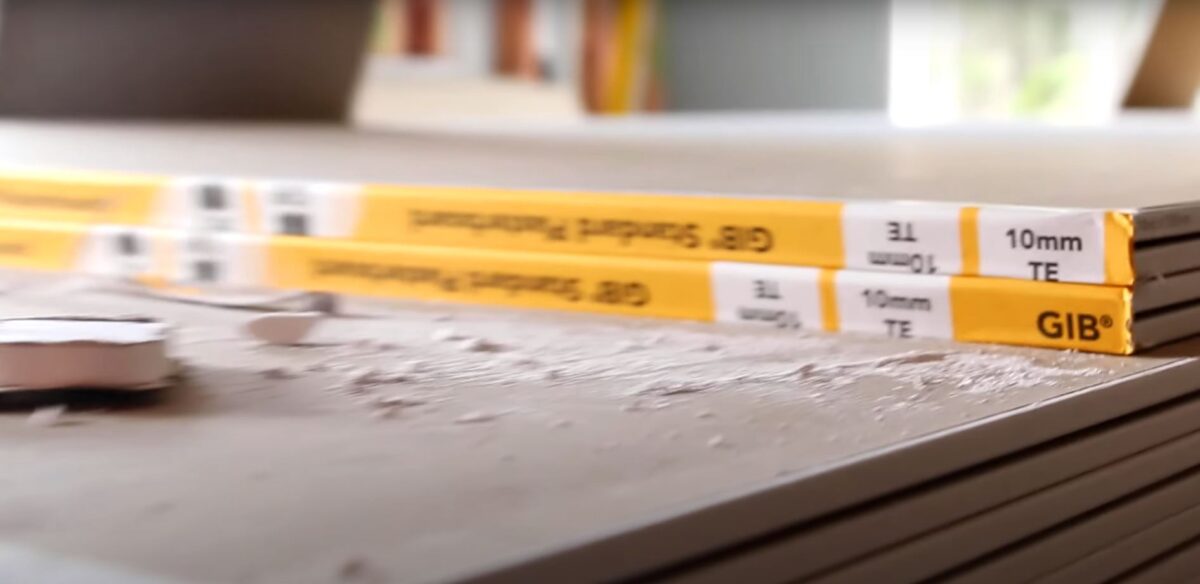Understanding Plasterboard Hazards
Plasterboard, commonly referred to as GIB Plasterboard in New Zealand, is a prevalent choice in home renovations across Auckland. Its versatility and adaptability are commendable. However, like many construction materials, there are associated hazards that homeowners should be aware of.
Dust and Respiratory Concerns
During the gib stopping and gib fixing processes, dust is a primary concern. The fine dust particles from plasterboard can easily become airborne and pose a threat when inhaled. Chronic exposure can lead to respiratory issues:
- Irritation in the nose, throat, and lungs.
- Possible development of asthma or worsening of existing asthma.
- Long-term exposure can lead to silicosis, a severe lung disease.
In areas like Torbay, where the atmosphere may already be laden with sea salt, adding plasterboard dust might exacerbate respiratory concerns.
Chemical Exposure
Modern plasterboards are treated with various chemicals to enhance their properties:
- Flame retardants to reduce flammability.
- Fungicides to prevent mould growth.
- Some of these chemicals, when interacting with other elements, can produce harmful gases.
In poorly ventilated spaces, these gases may pose health risks, especially during the fixing and stopping process.
Physical Injury Risks
Handling plasterboard poses potential physical risks:
- Cuts or abrasions from sharp edges.
- Muscular strains from lifting or moving heavy sheets.
- Falling sheets can cause injuries if not secured properly.
Environmental Concerns
Waste management is a concern, particularly in environmentally conscious suburbs like Henderson. Discarded plasterboard in landfills can lead to:
- Leaching of gypsum, impacting water quality.
- Methane production as the plasterboard decomposes.
Auckland Council Bylaw Considerations
The Auckland Council has specific bylaws concerning construction waste disposal. Improper disposal of plasterboard might attract penalties. In suburbs such as Epsom, the council has stringent guidelines on waste disposal to maintain the area’s pristine environment.
Additionally, regional councils have varying codes concerning construction and renovation. It’s vital to check with your local council before commencing any renovation work.
Hiring Professionals: The Safer Choice
Given the complexities and potential hazards associated with plasterboard:
- Professionals have the proper equipment to mitigate dust.
- They understand how to handle and dispose of plasterboard responsibly, adhering to local bylaws.
- Experienced teams can efficiently navigate the challenges posed by the unique characteristics of Auckland’s varied suburbs.
Types of Plasterboard and Their Considerations
| Type | Use Case | Pros | Cons | Hazards |
| Standard | General walls & ceilings | Versatile, cost-effective | Not suitable for wet areas | Dust during installation |
| Moisture Resistant | Wet areas like bathrooms | Resists moisture and mould | Slightly more expensive | Chemical treatments |
| Fire Resistant | Walls requiring fire rating | Increased safety | Heavier and more costly | Additional chemicals |
| Sound Resistant | Soundproofing rooms | Noise reduction | Thicker and might need structural adjustments | Weight and handling |
To ensure safety and adherence to Auckland’s construction standards, hiring a professional gib stopping and gib fixing contractor is recommended. Not only will this guarantee a quality finish, but it will also safeguard the health and wellbeing of Auckland’s residents and their cherished communities.
FAQs about Plasterboard Hazards
Is plasterboard dust harmful to inhale?
Yes, inhaling plasterboard dust can irritate the nose, throat, and lungs. Prolonged exposure can lead to more severe respiratory conditions such as asthma or even silicosis.
Do plasterboards emit harmful chemicals?
Modern plasterboards are treated with various chemicals like flame retardants and fungicides. In poorly ventilated areas, these chemicals can release gases that might pose health risks.
Can plasterboard be disposed of in regular landfills?
While it is possible, it’s not recommended. When plasterboard decomposes in landfills, it can leach gypsum, impacting water quality and producing methane. Always check local disposal guidelines.
Are there any specific bylaws in Auckland regarding plasterboard disposal?
Yes, the Auckland Council has bylaws concerning construction waste disposal, including plasterboard. It’s essential to ensure responsible disposal according to your suburb’s guidelines.
How can I reduce plasterboard dust during renovations?
The best approach is to engage a professional gib stopping and gib fixing contractor. They have specialized equipment and techniques to minimize dust and ensure a safer environment during renovations.
Key Takeaways about Plasterboard Hazards
Dust Inhalation Risks Inhaling plasterboard dust can lead to respiratory problems, underscoring the importance of proper safety precautions during installation or renovation.
Chemical Emissions Some plasterboards can emit chemicals, especially in poorly ventilated areas, potentially posing health concerns for inhabitants.
Auckland Bylaw Considerations Specific bylaws in Auckland guide the proper disposal of plasterboard, ensuring environmental safety.
Professional Assistance For those in suburbs like Onehunga or Papatoetoe, it’s essential to hire skilled gib stopping and gib fixing contractors to ensure compliance with local regulations and optimal safety measures.
Plasterboard in Landfills Decomposing plasterboard in landfills might contribute to water pollution and methane production.
Safe Disposal is a Must Always be aware of and adhere to local guidelines for disposing of plasterboard responsibly.
Minimizing Exposure To maintain a healthy living or working environment, it’s vital to minimize exposure to plasterboard dust and chemicals, particularly during renovations.
